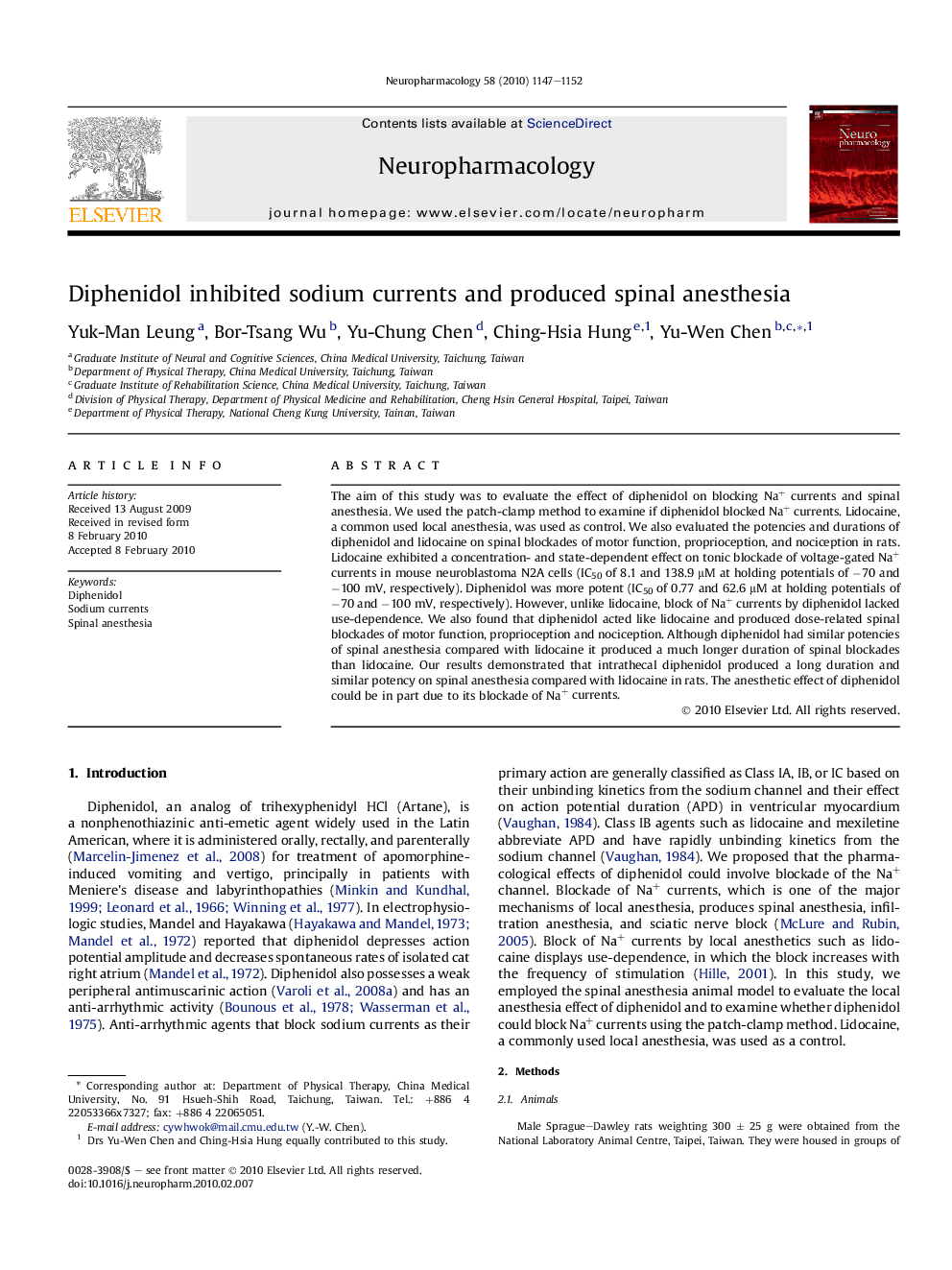| Article ID | Journal | Published Year | Pages | File Type |
|---|---|---|---|---|
| 5816105 | Neuropharmacology | 2010 | 6 Pages |
Abstract
The aim of this study was to evaluate the effect of diphenidol on blocking Na+ currents and spinal anesthesia. We used the patch-clamp method to examine if diphenidol blocked Na+ currents. Lidocaine, a common used local anesthesia, was used as control. We also evaluated the potencies and durations of diphenidol and lidocaine on spinal blockades of motor function, proprioception, and nociception in rats. Lidocaine exhibited a concentration- and state-dependent effect on tonic blockade of voltage-gated Na+ currents in mouse neuroblastoma N2A cells (IC50 of 8.1 and 138.9 μM at holding potentials of â70 and â100 mV, respectively). Diphenidol was more potent (IC50 of 0.77 and 62.6 μM at holding potentials of â70 and â100 mV, respectively). However, unlike lidocaine, block of Na+ currents by diphenidol lacked use-dependence. We also found that diphenidol acted like lidocaine and produced dose-related spinal blockades of motor function, proprioception and nociception. Although diphenidol had similar potencies of spinal anesthesia compared with lidocaine it produced a much longer duration of spinal blockades than lidocaine. Our results demonstrated that intrathecal diphenidol produced a long duration and similar potency on spinal anesthesia compared with lidocaine in rats. The anesthetic effect of diphenidol could be in part due to its blockade of Na+ currents.
Keywords
Related Topics
Life Sciences
Neuroscience
Behavioral Neuroscience
Authors
Yuk-Man Leung, Bor-Tsang Wu, Yu-Chung Chen, Ching-Hsia Hung, Yu-Wen Chen,
